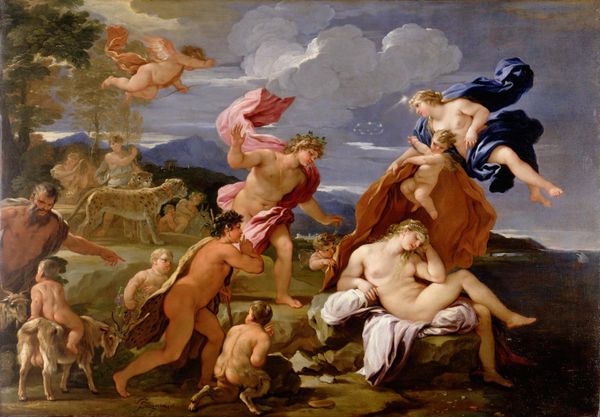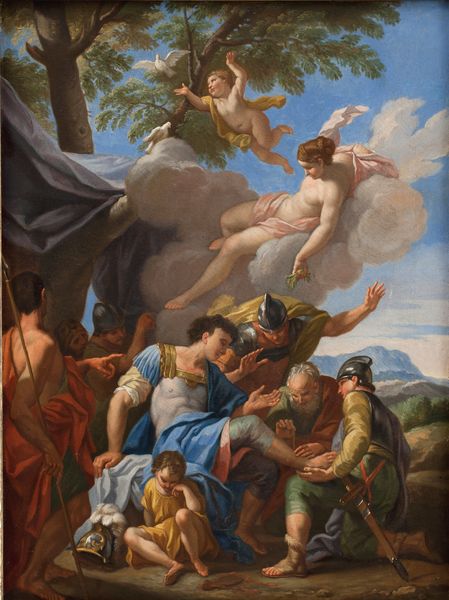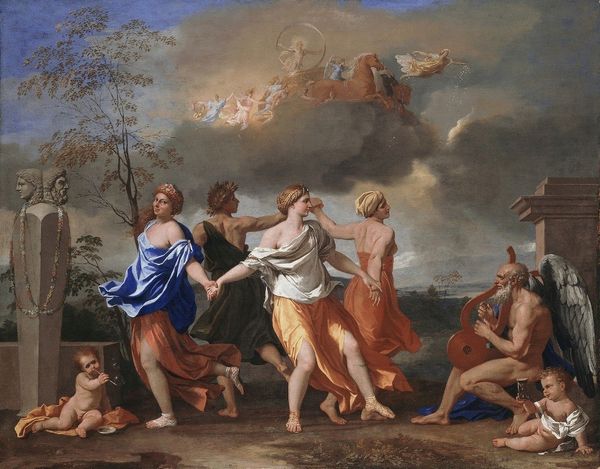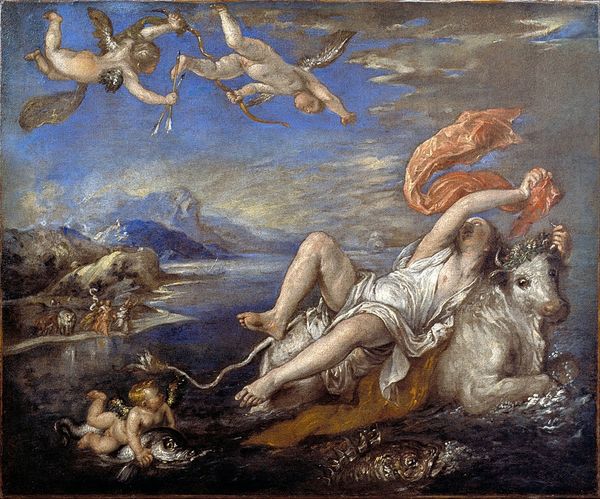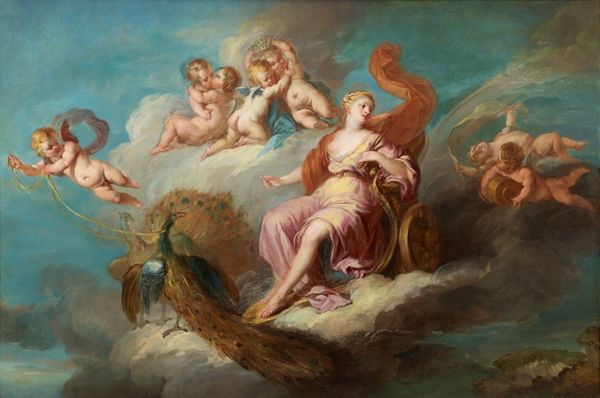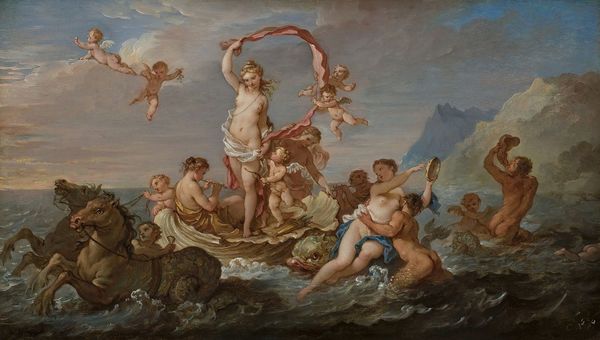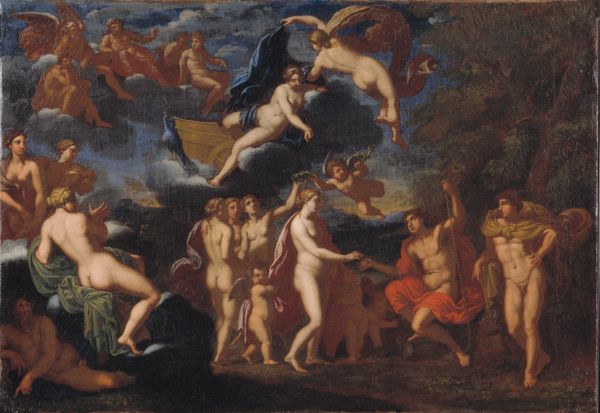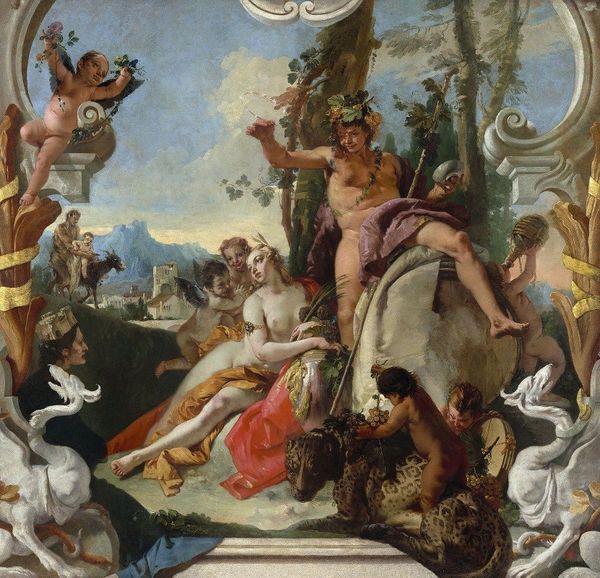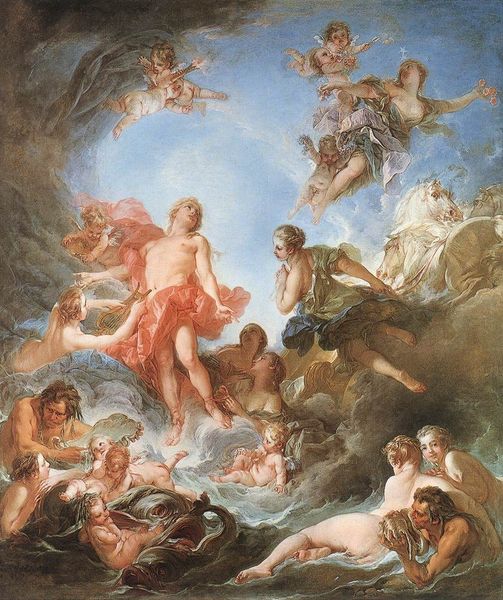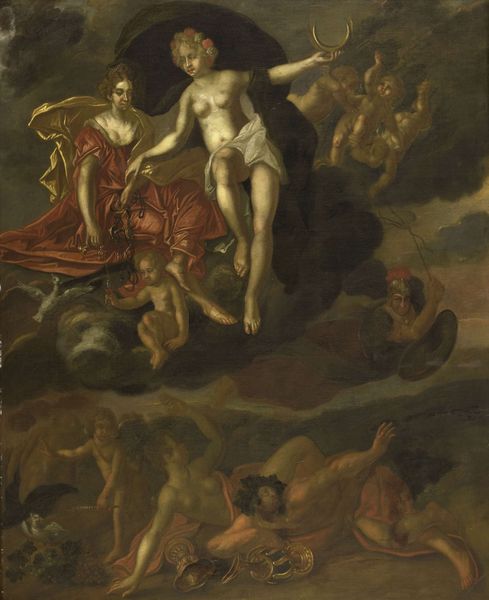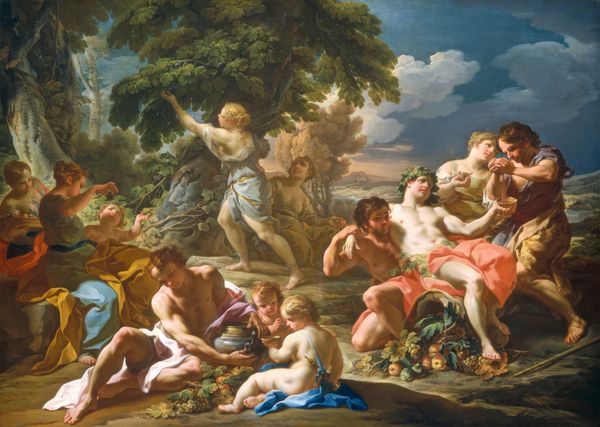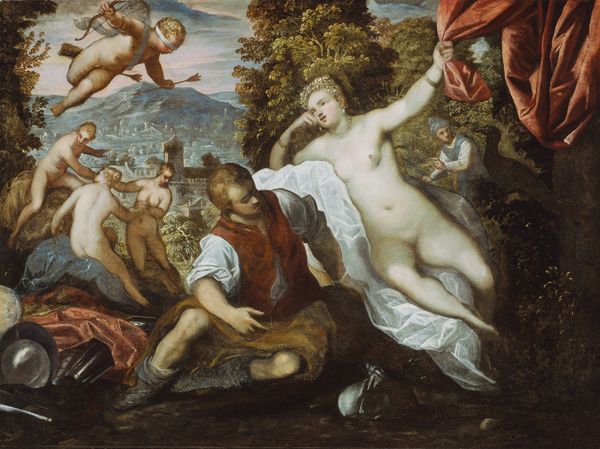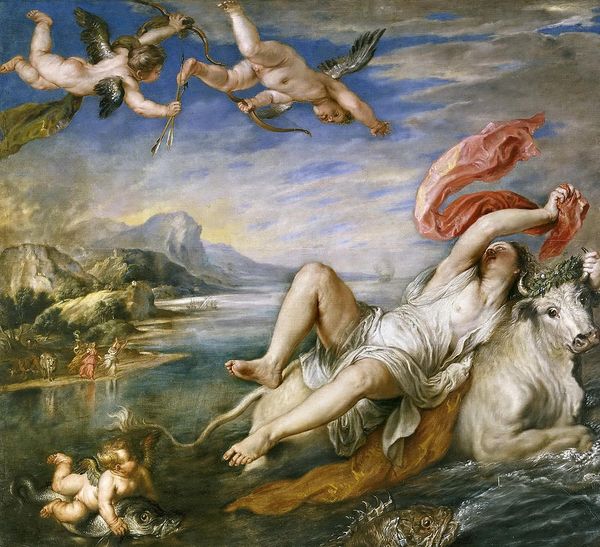
painting, oil-paint
#
allegory
#
baroque
#
painting
#
oil-paint
#
landscape
#
figuration
#
oil painting
#
mythology
#
history-painting
Copyright: Public domain
Editor: This is "Marine Gods Paying Homage to Love," painted in 1638 by Eustache Le Sueur. The oil paint is applied so delicately; it gives the whole scene an ethereal, dreamlike quality. What strikes me is the sheer busyness of the composition – so many figures swirling around. How do you approach interpreting something so densely packed? Curator: Let us first consider the artist's rendering of the human form. Observe how Le Sueur uses elongated proportions and graceful poses. Note also how his palette uses pastels such as blues, pinks and white to create an aesthetic experience through light, color and shapes rather than representational accuracy. The painting achieves dynamism by varying directional lines: do you see the lines created by Neptune’s trident compared to the arch of Cupid's bow? Editor: Yes, there is a deliberate contrast there that emphasizes a sense of dramatic tension through an intersection of diagonals and horizontals. The eye is drawn to opposing points, right? Curator: Precisely! That tension extends beyond the linear structure, it’s evident in the treatment of light and shadow. Observe the soft modeling of the figures juxtaposed with sharp contours defining elements like Neptune's drapery. Consider how that contributes to the artwork’s layered meaning, and generates internal conflict and movement, keeping our attention engaged. Editor: That is something I would have completely missed had you not broken it down. Thinking of it in terms of these opposing forces within the composition makes it more exciting to examine! Curator: Indeed. Visual relationships, formal qualities… these elements allow us to access its structural harmony, transcending the purely representational. This painting offers fertile ground for semiotic exploration. Editor: This has given me a whole new appreciation for examining art beyond just its historical context. Thank you!
Comments
No comments
Be the first to comment and join the conversation on the ultimate creative platform.
